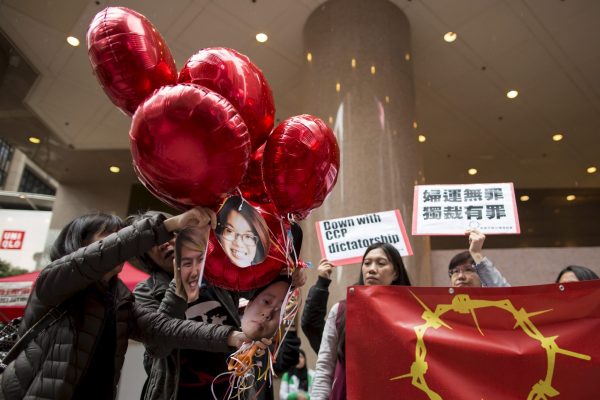On 1 January 2018, Luo Xixi, currently residing in the United States, published an open online letter accusing Chen Xiaowu, her former PhD advisor at Beihang University, of sexual assault. The open letter was disseminated quickly and widely among Chinese netizens and ultimately caused Chen’s layoff. This initial victory indicated the initiation of #MeToo in China.
On 5 April 2018, Li Youyou, an alumna of Peking University who later went to a US law school and currently lives in Canada, published another statement online. She accused Shen Yang, a prominent linguistics professor who used to work at Peking University, of sexual abuse that led to the suicide of a young victim, Gao Yan, in 1998. Then on 9 April 2018, a group of undergraduate students at Peking University urged the college to publicise school records showing how Shen Yang’s case was handled two decades ago. Public anger ultimately resulted in the removal of Shen Yang from his teaching post at Nanjing University.
This online activism is a world away from the origins of feminism in China, which can be traced back to the turn of the 20th century when the country was plagued with a series of military defeats, foreign invasions and economic crises. Lydia Liu, Rebecca Karl and Dorothy Ko write that for many early feminists, ‘women’s emancipation was part of a larger project of enlightenment and national self-strengthening, coded either “male” or “patriarchal”’.
The second wave of Chinese feminism was a significant part of China’s socialist revolution. A formally institutionalised top-down campaign during the Mao era spearheaded the women’s liberation movement. This program of state feminism enormously improved Chinese women’s social status, literacy rates, educational levels and workforce participation.
The third wave took place after China’s economic reform and opening up in 1978. In 1987, Li Xiaojiang established the first program of women’s studies (funu xue yanjiu) at Zhengzhou University. In September 1995, the Fourth World Conference on Women was held in Beijing, which brought about a proliferation of feminist cultural productions and contributed to the rise of feminist NGOs in China.
China has never been so closely integrated with the world, and gender-related issues in China have grown to be more than local matters. But in the new millennium, backlash from the state poses great challenges to the Chinese feminist movement. Public spaces expanded by the collective efforts made by NGOs, civil organisations and social activism have been gradually encroached on by the tightening control of the authoritarian party-state.
In 2015, on the eve of International Women’s Day, five feminist activists were detained for planning to distribute anti-sexual harassment stickers. But contrary to the state’s intention, the detention of the ‘Feminist Five’ galvanised protests and online petitions were signed by two million people from all over the world, leading to their release in April. Further restraints imposed on NGO registration and activities by the 2017 ‘Foreign NGO Law’ indicate an increasingly strained relationship between feminist NGOs and the party-state.
Under these compromised conditions for activism, the internet and digital technologies provide new venues for speedy information flows and social engagement. These combined forces have sought to penetrate state censorship and bureaucratic obstacles to push forward #MeToo in China. When #MeToo was censored, a feminist-created cartoon image of a ‘rice bunny’ (MiTu, a Chinese homophone of #MeToo) was circulated on social media to continue the networked feminist movement’s momentum.
Online discussion has radically changed people’s views of sexual assault and brought a new sense of empowerment and networked sociality to those who once suffered in silence. This destigmatisation translates into real-life action. In April 2019, Jingyao Liu, a Chinese student studying at the University of Minnesota, filed a lawsuit accusing JD.com CEO, Liu Qiangdong, of raping her. Encouraged by the young student’s brave fight against one of China’s richest e-commerce tycoons, many young women posted their own stories of sexual assault on social media. An online petition with the hashtag #HereForJingyao initiated by a group of Chinese feminists received thousands of signatures.
The decentralising power of new media and digital technology has gained the feminist movement wide traction. Lu Pin, a long-time advocate for feminist activism, has observed, ‘Those who are fighting are not famous people. It is countless grassroots people echoing each other’. Emerging grassroots feminism deviates from earlier waves of state-mandated, top-down political campaigns and market feminism (emphasising individual self-fulfilment in a capitalist economy). Ordinary people’s discreet acts of resistance have left an indelible mark on Chinese and global feminist history.
Hui Faye Xiao is Associate Professor of modern Chinese literature and culture at the University of Kansas.
This article appeared in the most recent edition of East Asia Forum Quarterly — Chinese realities — Vol. 11, No. 2.

